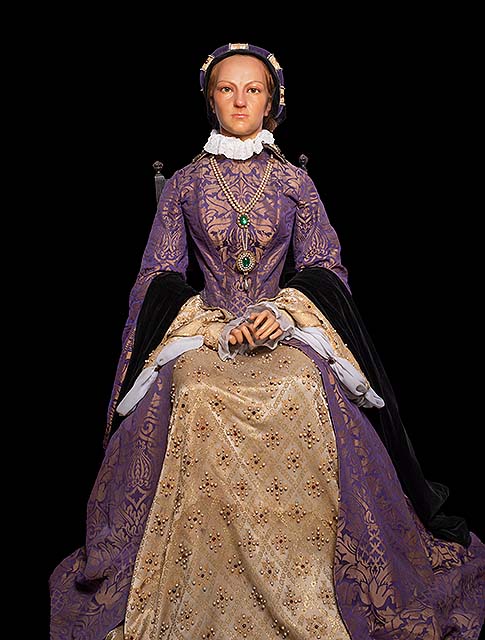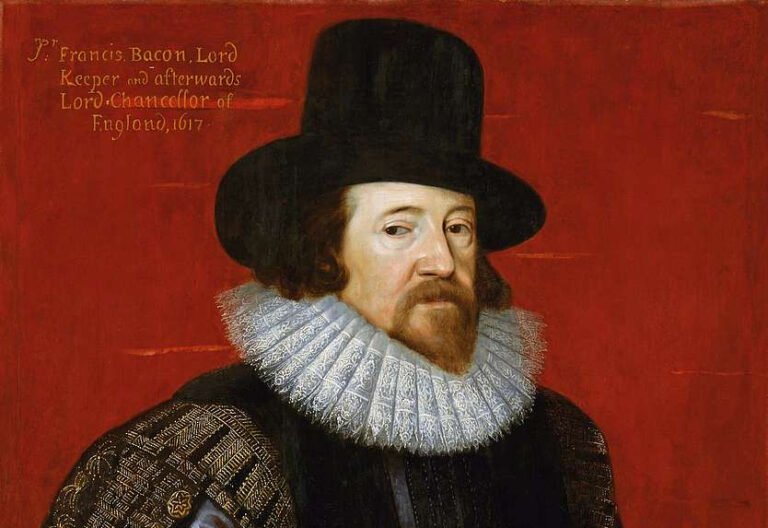Mary I, also known as Mary Tudor, was the first queen regnant of England. She ruled from 1553 to 1558 and left a significant impact on the nation.
Mary I’s reign is often remembered for her efforts to restore Catholicism in England. She was born to Henry VIII and Catherine of Aragon. Her early life was marked by political and religious turmoil. This shaped her future actions as queen.
She faced many challenges during her time on the throne. Her policies and decisions sparked controversy and conflict. Despite her short reign, her legacy endures. Understanding Mary I’s life and reign provides valuable insights into a turbulent period in English history. This post will explore her journey, struggles, and lasting impact. Join us as we delve into the life of Mary I, a queen whose story continues to fascinate.
Early Life And Background
Mary I, also known as Mary Tudor, was the first queen to rule England in her own right. Her early life and background shaped her reign. Her childhood was filled with both privilege and challenges. Let’s delve into the key aspects of her early years.
Royal Lineage
Mary I was born on February 18, 1516. She was the daughter of King Henry VIII and his first wife, Catherine of Aragon. Her birth was significant, as she was the only surviving child of her parents for many years.
Her royal lineage was impressive. Mary’s grandparents on her mother’s side were Ferdinand II of Aragon and Isabella I of Castile. These monarchs were known for uniting Spain and supporting Christopher Columbus’s voyages to the New World. On her father’s side, she was a direct descendant of the Tudor dynasty, which began with her grandfather, Henry VII.
| Parent | Grandparent |
|---|---|
| Catherine of Aragon | Ferdinand II of Aragon |
| Catherine of Aragon | Isabella I of Castile |
| Henry VIII | Henry VII |
Childhood Influences
Mary’s early years were heavily influenced by her mother, Catherine. Catherine was a strong Catholic and instilled in Mary a deep religious faith. This faith would later define her rule as queen.
She received an excellent education. She was fluent in Latin and could read Greek and French. Her tutors included the renowned scholar Juan Luis Vives. He emphasized the importance of education for women, which was rare at that time.
As a child, She experienced significant emotional upheaval. Her father’s desire for a male heir led to the annulment of his marriage to Catherine. This event caused her to be declared illegitimate. She was separated from her mother and placed in the care of others. These early hardships influenced her views and her determination to maintain her religious beliefs.
Path To The Throne
Mary I, also known as Mary Tudor, faced a challenging journey to the English throne. Her path was marked by significant political instability and personal determination. This section explores the key events that shaped her ascent to royalty.
Political Turmoil
The political landscape of England was chaotic during Mary’s early years. Her father, King Henry VIII, had caused a split with the Roman Catholic Church. This led to the formation of the Church of England. The religious upheaval created divisions among the English nobility.
Mary, a devout Catholic, faced opposition due to her faith. Following her father’s death, her half-brother Edward VI ascended the throne. Edward was a staunch Protestant and aimed to strengthen Protestant reforms. This period saw increased tension between Catholics and Protestants.
Edward VI’s reign was short. He died in 1553, leaving a power vacuum. The struggle for the throne intensified. Edward named Lady Jane Grey, a Protestant, as his successor. This decision sparked further conflict.
Claiming Her Right
Mary believed she had the rightful claim to the throne. Despite Edward’s will, she garnered support from those loyal to her claim. She rallied her supporters, including powerful nobles and commoners alike. The support of the people was crucial in her quest.
She marched towards London with her supporters. Her determination and the backing of her loyal followers led to a swift victory. Lady Jane Grey was deposed after only nine days as queen. She then entered London triumphantly and was declared queen.
Her successful claim was a testament to her resilience and political acumen. Mary I’s journey to the throne was fraught with challenges. Yet, her unwavering belief in her right and the support she received were pivotal.
| Event | Year |
|---|---|
| Henry VIII’s break with Rome | 1534 |
| Edward VI’s ascension | 1547 |
| Edward VI’s death | 1553 |
| Mary I crowned queen | 1553 |
Reign As Queen
Mary I, also known as Mary Tudor, was the Queen of England from 1553 to 1558. Her reign was marked by significant events and challenges. As the first queen to rule England in her own right, she faced many obstacles.
Coronation Ceremony
Mary’s coronation took place on October 1, 1553. The ceremony was grand and elaborate. People gathered in large numbers to witness the event. The streets were decorated with flowers and flags. Mary wore a magnificent gown and a crown. She walked to Westminster Abbey, where the ceremony was held. The Archbishop of Canterbury placed the crown on her head. This marked the beginning of her reign as queen.
Initial Challenges
Mary faced many challenges at the start of her reign. She inherited a kingdom in turmoil. Religious tensions were high. Her father, Henry VIII, had separated the Church of England from the Catholic Church. Mary was a devout Catholic and aimed to restore Catholicism. This was not easy. Many people had become Protestant. Mary also had to deal with economic problems. The country was in debt. Inflation was rising. Mary had to make difficult decisions to stabilize the economy.

Credit: www.britannica.com
Religious Policies
Mary I enforced strict religious policies, aiming to restore Roman Catholicism in England. Her reign saw the persecution of Protestants, earning her the nickname “Bloody Mary. “
Restoration Of Catholicism
Mary I implemented policies to restore Catholicism as the official religion of England. She aimed to reverse the Protestant reforms made by her father, Henry VIII, and brother, Edward VI.
Persecution Of Protestants
Mary I’s reign was marked by the persecution of Protestants, earning her the nickname “Bloody Mary.” She executed hundreds of Protestants who refused to convert to Catholicism, causing widespread fear and oppression.
Marriage And Alliances
Mary I of England, often called “Mary Tudor,” reigned from 1553 to 1558. Her marriage and alliances had significant impacts on her reign. These alliances shaped the political landscape of the time. They influenced her decisions and affected England’s relations with other countries.
Marriage To Philip II
Mary married Philip II of Spain in 1554. This union was a strategic move. Philip was a powerful ruler in Europe. The marriage aimed to strengthen ties between England and Spain. Many English people opposed this marriage. They feared Philip’s influence over Mary. Some worried about losing England’s independence. Despite this, the marriage went ahead.
Political Implications
The marriage had major political implications. It created strong alliances with Spain. This affected England’s foreign policy. Some alliances were beneficial, but others caused tension. Mary’s marriage to Philip also affected her domestic policies. Her efforts to restore Catholicism in England intensified. Many saw this as Philip’s influence. This led to unrest and rebellion.
Mary’s alliances through marriage had long-lasting effects. They shaped her reign and England’s future. Her marriage to Philip II remains a significant part of her legacy.
Economic And Social Reforms
Mary I, often remembered as “Bloody Mary,” also focused on economic and social reforms during her reign. These initiatives aimed to stabilize the kingdom and improve the lives of her subjects. Her efforts touched various facets of society, from financial strategies to social welfare policies.
Financial Strategies
Mary I implemented several financial strategies to strengthen England’s economy. She reformed the currency, which had suffered from inflation and devaluation. Her administration worked to restore silver content in coins, enhancing their value and trust among the people. By addressing these financial issues, Mary aimed to create a more stable and prosperous economy.
Mary also increased customs duties to boost revenue. This helped fund the government and reduce the national debt. Her financial reforms provided a foundation for future economic stability in England.
Social Welfare Initiatives
Mary I introduced social welfare initiatives to support the poor and needy. She established hospitals and almshouses to care for the sick and elderly. These institutions provided shelter and medical care to those in need. Mary’s focus on social welfare aimed to improve the quality of life for her subjects.
She also worked to enforce laws against vagrancy. This reduced the number of homeless people and provided them with better living conditions. Mary’s social reforms demonstrated her commitment to the well-being of her people.
Legacy And Historical Impact
Mary I of England, often called “Bloody Mary,” has left an indelible mark on history. Her reign, though brief, was filled with significant events and decisions. These have shaped how we view her today. This section explores her legacy and historical impact through various lenses.
Reputation Over Time
Mary I’s reputation has evolved over the centuries. During her reign, she was known for her strong Catholic beliefs. She attempted to reverse the Protestant Reformation initiated by her father, Henry VIII. This earned her the nickname “Bloody Mary” due to the Marian persecutions.
Historians have reassessed her role and motivations over the years. Some argue she was a victim of the political and religious turbulence of her time. Others view her as a determined leader who tried to restore religious unity.
Despite the negative connotations, modern interpretations offer a more balanced view. Her reign is now seen as a complex period of transition. Her efforts to stabilize her kingdom are acknowledged, even if her methods were harsh.
Long-term Consequences
Mary I’s actions had long-term consequences for England. Her attempts to restore Catholicism were ultimately unsuccessful. Yet, they set the stage for future religious policies. Her marriage to Philip II of Spain also had lasting diplomatic effects.
Mary’s reign highlighted the deep religious divisions within England. This set the stage for her sister Elizabeth I’s more moderate approach. Elizabeth’s reign saw the establishment of the Elizabethan Religious Settlement, a compromise that shaped English religious life for centuries.
Mary’s legacy also includes her influence on female rulers. As the first queen regnant of England, she paved the way for future female monarchs. Her reign demonstrated that women could rule effectively, even in tumultuous times.
Overall, Mary I’s legacy is a mix of controversy and achievement. Her impact on religion, politics, and gender roles continues to be a subject of historical debate.

Credit: www.potterswaxmuseum.com
Personal Life And Health
Mary I, also known as Mary Tudor, had a complex personal life. Her health influenced her reign as the Queen of England. This section explores her personal struggles and health issues.
Personal Struggles
Mary I faced many personal struggles. Her childhood was turbulent due to her parents’ divorce. Her father, Henry VIII, divorced her mother, Catherine of Aragon, affecting Mary’s status and mental well-being.
She was declared illegitimate and removed from the line of succession. Later, Mary was reinstated, but her faith was tested. She was a devout Catholic in a Protestant-dominated court. This led to isolation and emotional distress.
Health Issues
Mary’s health was frail throughout her life. She suffered from frequent illnesses, including headaches and stomach pains. These ailments often left her bedridden.
Mary had two false pregnancies. She believed she was pregnant, but no child was born. This caused her great emotional pain. Historians now think she may have had a condition called pseudocyesis.
Her poor health and emotional struggles affected her reign. She was often unable to perform her royal duties effectively.
FAQs
Who Was Mary I?
Mary I was the first queen regnant of England. She reigned from 1553 to 1558.
Why Is Mary I Called ‘bloody Mary’?
Mary I earned the nickname ‘Bloody Mary’ for her persecution of Protestants. She aimed to restore Catholicism.
What Was Mary I’s Reign Known For?
Mary I’s reign was marked by religious persecution and attempts to restore Catholicism in England.
How Did Mary I Die?
Mary I died of illness, likely influenza, on November 17, 1558. Her reign lasted five years.
Conclusion
Mary I’s reign was a complex and turbulent chapter in history. Her actions shaped England’s religious landscape significantly. She remains a figure of intense debate. Some view her as a determined leader. Others see her as a tragic ruler. Her legacy, though controversial, is undeniably impactful.
Mary I’s story continues to fascinate many. Learning about her reign offers valuable historical insights.








